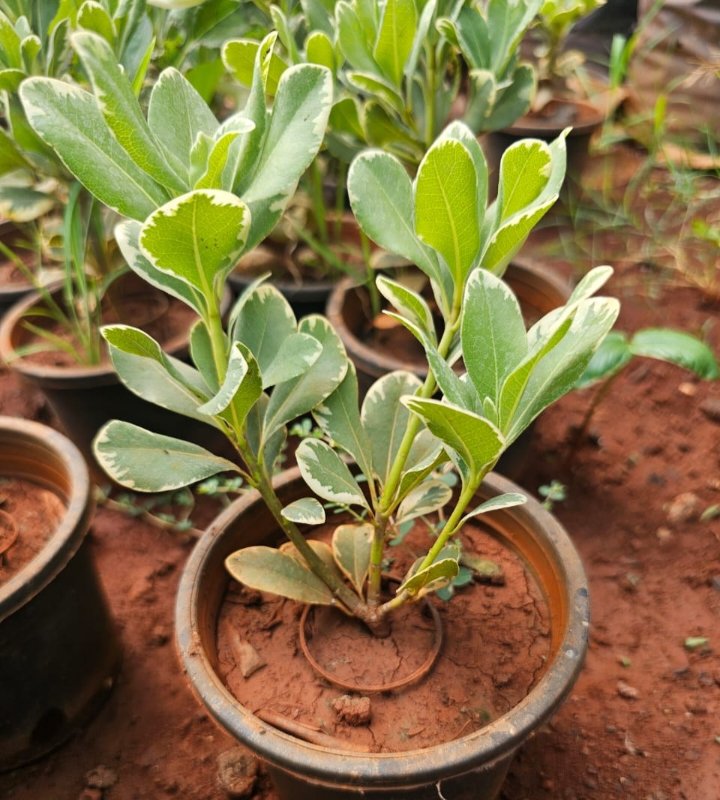Pettas Palm, also known as the Petra Palm or Petra Plant, is a stunning and versatile indoor palm that has captured the hearts of plant enthusiasts around the globe. Scientifically classified as Neoregalia spp., this captivating palm is renowned for its vibrant foliage, ease of care, and unique growth habits. Whether you’re looking to enhance your indoor space or create a lush garden retreat, the Pettas Palm is an ideal choice. Picture stepping into a sunlit room adorned with the graceful fronds of this palm, bringing a touch of tropical paradise to your home.
Appearance
Pettas Palm features elegant, arching fronds that can grow up to several feet long, creating a lush and vibrant display. The leaves are typically glossy green with striking variegated patterns, which can include shades of yellow, cream, or even hints of pink, adding depth and visual interest to the plant. The stems are sturdy and upright, supporting the delicate fronds, giving the plant an overall graceful appearance.
The palm’s growth habit is usually upright and bushy, making it an excellent choice for adding height and texture to indoor spaces. Its striking foliage not only brightens up any room but also complements various interior styles, from modern to tropical.
Cultivation and Care
Caring for Pettas Palm is relatively straightforward, making it an excellent option for both novice and experienced gardeners. Here are some essential tips for successfully growing this beautiful palm:
- Light: Pettas Palm thrives in bright, indirect sunlight. While it can tolerate lower light conditions, providing adequate light is essential for promoting healthy growth and vibrant foliage. A spot near a window with filtered light is ideal.
- Soil: The plant prefers well-draining, nutrient-rich potting soil. A mixture that includes peat moss, perlite, and potting soil works well to provide the necessary drainage and aeration for the roots.
- Watering: Water the plant when the top inch of soil feels dry. Ensure thorough watering, allowing excess water to drain out of the pot. Overwatering should be avoided, as it can lead to root rot and other issues.
- Humidity: As a tropical plant, Pettas Palm enjoys higher humidity levels. If your home is dry, especially in winter, consider using a humidifier or placing the plant on a pebble tray filled with water to maintain moisture levels.
- Fertilizing: During the growing season (spring and summer), feed the plant with a balanced, water-soluble fertilizer every 4 to 6 weeks to support healthy growth and vibrant foliage. Reduce fertilization in the fall and winter when the plant’s growth slows.
- Pruning: Regularly remove any yellow or damaged leaves to keep the plant looking its best. Pruning helps maintain the plant’s shape and encourages new growth.
Uses and Benefits
Pettas Palm is not only a visually stunning addition to your home but also offers several benefits:
- Air Purification: Like many indoor plants, the Pettas Palm helps improve indoor air quality by filtering out toxins and releasing oxygen, contributing to a healthier living environment.
- Versatile Decor: The plant’s striking appearance makes it suitable for various interior styles, from minimalist to tropical. It can be used as a statement piece in living rooms, offices, or even bathrooms.
- Low Maintenance: With its forgiving nature and ease of care, Pettas Palm is perfect for busy individuals or those new to houseplants.
Common Issues
While Pettas Palm is generally easy to care for, it can encounter a few common challenges:
- Pests: Watch out for common pests like spider mites, mealybugs, and scale insects. Regular inspections and prompt treatment will help keep your plant healthy.
- Leaf Drop: If the plant starts dropping leaves, it may be a sign of stress due to overwatering, underwatering, or insufficient light. Adjust your care routine accordingly to restore its health.
- Brown Tips: Browning leaf tips may indicate low humidity or inconsistent watering. Ensure the plant receives adequate humidity and check your watering schedule.






Reviews
There are no reviews yet.